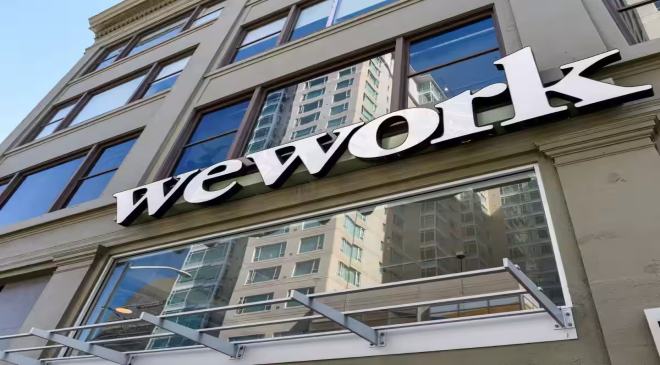After a meteoric rise to become one of the United States’ most valuable startups, the SoftBank-backed co-working space provider, WeWork, has made headlines by filing for bankruptcy.
The flexible co-working and office space provider’s bankruptcy plea did not come as a surprise, given that its bet on increased office-sharing space usage did not materialise. The rise in global office vacancies, even post-pandemic, was a significant factor.
Read More: Business Idea: How To Open Store At Railway Station; Check Tender, Rent And Application Process
What led to WeWork’s bankruptcy?
WeWork, once valued at $47 billion, had a business model built on the premise of more people working from the office. The company used to secure long leases on large properties, offering them to smaller businesses on more flexible and shorter terms.
However, the rise of remote work and hybrid models dealt a severe blow to WeWork’s innovative office-space sharing plan. Now, as WeWork files for US bankruptcy protection, SoftBank believes that renegotiating its costly leases is critical for its survival.
WeWork said in a statement that its bankruptcy proceedings are not likely to impact its franchisees worldwide, except for the US and Canada. As of June, the company had office space available at 777 locations worldwide. However, the company has faced significant struggles due to declining demand for office workspace leasing and tenant losses, especially in the context of a slowdown in office leasing.
Jeffrey Havsy, the Commercial Real Estate Industry Practice Lead at Moody’s Analytics, emphasized the adverse effects of losing tenants, especially during a time of reduced office leasing. This phenomenon has had a negative impact on office building cash flows and values. Havsy noted, “This will add to the negative sentiment in the marketplace and make financing harder, especially for those buildings that need to refinance in the next 12-18 months.”
Read More: Gold Rate In Dhanteras-Deepavali Week: Check Latest Price In Your City On November 7
Another issue that contributed to WeWork’s bankruptcy filing was the high cost and inflexibility of lease terms. To compound the situation, many corporate clients canceled their leases due to the growing trend of remote work.
Notably, in the second quarter of 2023, space costs consumed a significant 74 percent of WeWork’s revenue.
The company appears to be aiming to leverage the provisions of the US bankruptcy code to eliminate burdensome leases, as suggested by the law firm Cadwalader, Wickersham & Taft LLP in a note to landlords on its website in August.
WeWork’s meteoric rise and steep fall
WeWork’s founder, Adam Neumann, led the company to a meteoric rise. At its pinnacle, WeWork became the most valuable US startup, with a staggering $47 billion valuation.
This growth attracted blue-chip investors, including SoftBank and Benchmark, while major Wall Street banks like JPMorgan Chase also supported the company.
Read More: Crypto Price Today: Bitcoin below $35,000; Ethereum holds $1,900; Altcoins rally up to 6%
However, the pursuit of rapid expansion at the expense of profitability, coupled with revelations about Neumann’s unorthodox behavior, eventually resulted in his removal and a turbulent derailment of an initial public offering in 2019.
As a response, SoftBank felt compelled to double down on its investment in WeWork and appointed Sandeep Mathrani, a seasoned real estate expert, as CEO.
In an attempt to salvage the situation, SoftBank brokered a deal in 2021 to take WeWork public through a merger with a blank-check acquisition company. However, this deal valued the company at a mere $8 billion, a far cry from its former glory.
WeWork did achieve the renegotiation of 590 leases, saving approximately $12.7 billion in fixed lease payments. Despite this, the far-reaching impact of the Covid-19 pandemic, which mandated remote work for office employees, cast a long shadow.
Many of WeWork’s landlords, grappling with their challenges, demonstrated little willingness to provide the company with lease concessions.
Furthermore, WeWork grappled with the double challenge of surging inflation and a slowdown in economic growth. While the company managed to secure contracts with some major conglomerates, a significant portion of its client base consisted of startups and small businesses.
However, when inflation surged and economic prospects dimmed, these clients began to curtail their spending.
To make matters more complex, WeWork found itself contending with competition from its very landlords. Commercial property companies, traditionally committed to long-term lease agreements, promptly pivoted to offer short and flexible leases in response to the evolving landscape of the office sector.
In 2023, David Tolley, a former investment banker and private equity executive with a track record of guiding companies through turbulent times, assumed the role of WeWork’s CEO. His prior experience included successfully leading Intelsat, a debt-laden satellite communications provider, out of bankruptcy in 2022.
In an effort to avert a financial crisis, WeWork engaged in debt restructurings. However, despite these efforts, bankruptcy became an unavoidable reality. The company’s compounding woes have significantly impacted its stock price, which is down over 98 per cent in a year.
In the days leading up to its bankruptcy filing, Adam Neumann expressed his belief that, with the right strategy and a dedicated team, WeWork could potentially stage a successful comeback.

































